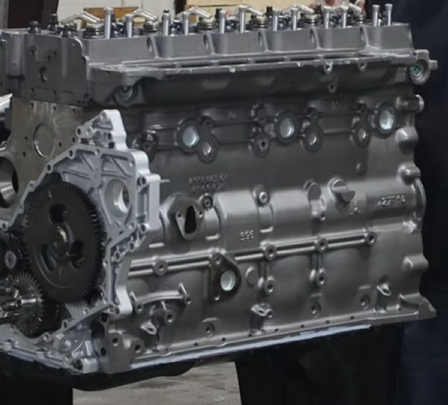Why Billet Freeze Plugs Are a Must-Have Upgrade for the 7.3 Powerstroke Diesel
The 7.3L Powerstroke diesel engine is known for its durability and longevity. But if you're building for reliability, towing regularly, or adding performance mods, one small but critical upgrade often goes overlooked: the Billet Freeze Plug.
While often considered a minor part, the freeze plug plays a crucial role in your 7.3's cooling system and engine block integrity. The factory-installed soft plugs can become a serious weak point -- especially under high pressure, heat, or when making big power.
In this article, we'll explain what freeze plugs do, why they fail, and why upgrading to Billet Freeze Plugs on your 7.3 Powerstroke is a smart investment for both performance and peace of mind.
What Do Freeze Plugs Do in a 7.3 Powerstroke?
Freeze plugs seal the holes used during the engine block casting process. These holes allow access for cleaning out sand and debris after the block is formed. Once cleaned, these openings are sealed with freeze plugs to prevent coolant from leaking out of the engine.
On a 7.3 Powerstroke, several freeze plugs are installed on the sides and back of the block -- and they're under constant exposure to high pressure, vibration, and heat cycles.
The Problem with Factory Freeze Plugs
Stock freeze plugs on the 7.3 are usually press-in soft steel or brass plugs. These can potentially work fine under normal use, but they come with a few key problems:
- They Can Pop Out Under Pressure
If coolant pressure gets too high -- whether from overheating, head gasket failure, or hard acceleration with a tuned engine -- stock plugs can blow out, dumping coolant and causing catastrophic overheating.
- They Corrode Over Time
Steel and brass plugs can corrode over time, especially with poor coolant maintenance. Once weakened, a plug can start leaking slowly or rupture completely.
- They're Inaccessible and Hard to Replace
The rear freeze plug behind the flywheel is particularly notorious. If it fails, the transmission must be removed to access it -- turning a $10 part into a $1,000+ repair.
Why Upgrade to Billet Freeze Plugs?
- Extreme Durability
Billet aluminum or stainless steel freeze plugs are machined from solid metal, making them far stronger than their stamped or pressed counterparts. They can handle high coolant pressure, aggressive tuning, and heavy towing without risk of failure.
- Positive Retention Design
Many Billet Freeze Plug Kits use bolt-in designs. Instead of relying on press-fit tension, they're threaded or clamped in place -- eliminating the risk of a freeze plug "popping out" under load.
- Zero-Leak Insurance for Tuned or Rebuilt Engines
If you've invested in a performance or rebuilt engine, don't risk a cooling failure from a cheap factory plug. Billet Freeze Plugs give you peace of mind, knowing your cooling system is locked down tight.
Recommended by Choate
If you want the best for your 7.3, we highly recommended our Billet Freeze Plug Kit. We design our plugs specifically to handle the rigors of performance diesel engines and we are so confident in our design that we use them in all of our 7.3 builds. Our freeze plug kits include:
- Aluminum, Blow Proof Plugs
- Buna O-Rings
- Stainless Steel hardware
Installation Notes
The rear freeze plug installation requires the transmission be removed to access it -- so if you are having an engine rebuilt or installed, now is the time to install billet freeze plugs. Side plug retainers are much easier to install and are a great preventative measure for trucks still in service.
Final Thoughts: Don't Let a Cheap Plug Ruin Your Build
You wouldn't skip head studs or an upgraded oil cooler in a diesel build -- so don't overlook freeze plugs. If you're investing time and money into your 7.3 Powerstroke's reliability, a Billet Freeze Plug Kit is a small price to pay for massive insurance against catastrophic coolant loss.
For the best fit, strength, and engineering, Choate Engineering Performance's Billet Freeze Plugs are trusted by diesel shops, engine builders, and serious Powerstroke owners across the country.
To learn more about what upgrades you should be looking for in your next 7.3 Powerstroke rebuild, check out these articles:
